In 2025, Jeffree Star is a paradox in designer sunglasses — part digital relic, part reinvented mogul. Once known for stirring up beauty drama on YouTube and painting his face with unapologetic flair, he now commands a sprawling empire that stretches from viral cosmetics to luxury yak farming in rural Wyoming. Yes, yaks.
What began as a fiercely stylized persona on Myspace has evolved into something much more formidable: a brand, a business, a blueprint. His wealth today is not the result of a single viral moment or scandal-fueled fame, but of relentless reinvention. Whether he’s launching multimillion-dollar makeup palettes, monetizing controversy, or quietly investing in land and livestock, Jeffree has defied expectations at every turn.
While exact numbers fluctuate depending on who’s counting, Star’s estimated net worth in 2025 hovers comfortably around the $200 million mark. And the real story? It’s not just how he made the money — it’s how he kept it, diversified it, and built an empire on the unlikeliest of foundations.
The 2025 Net Worth Breakdown — Where Jeffree Star’s Money Comes From
Jeffree Star didn’t just cash in on YouTube fame — he architected a multi-pronged money machine. As of 2025, his estimated net worth sits at roughly $200 million, but what makes it remarkable isn’t the number itself. It’s how diverse — and surprisingly strategic — his income streams have become.
At the heart of his fortune remains Jeffree Star Cosmetics, the beauty brand he launched in 2014 with his savings and a vision for bold, unfiltered glam. Though it’s no longer the viral juggernaut it once was, JSC continues to generate tens of millions in annual revenue, driven by cult-favorite products like the Blood Sugar palette and Star Liquid Lipsticks. Star’s tight grip on brand ownership — no investors, no public shareholders — means a far greater share of profits land directly in his accounts. In an era where many influencers sell out or sign licensing deals, Jeffree stayed private and profitable.
His YouTube channel, though less active than in his peak drama era, still rakes in ad revenue thanks to an extensive back catalog and a loyal subscriber base. According to some social media analytics platforms, his passive earnings from the platform and sponsored content remain in the high six figures annually, even without regular uploads.
Then there’s the wildcard: Star Yak Ranch. What started as a passion project — and a curveball from the glittery world of beauty — has become a legitimate business. Based in Wyoming, the ranch breeds and sells high-end yak meat, wool, and livestock. Niche? Absolutely. But also lucrative. With premium cuts selling for over $30 a pound and luxury buyers intrigued by the exotic branding, it’s more than just a quirky side hustle — it’s a new kind of lifestyle empire in the making.
Real estate rounds out the portfolio. Jeffree owns multiple properties across Wyoming, Michigan, and California, including a sprawling ranch estate and commercial buildings tied to his cosmetics operations. His knack for flipping high-value properties has added millions to his net worth over time, and his Wyoming holdings alone have appreciated significantly as rural luxury becomes a quiet status symbol.
Altogether, Jeffree’s wealth doesn’t hinge on any one stream — and that’s by design. He’s no longer just an internet celebrity riding trends. He’s a diversified entrepreneur who turned virality into staying power.
Before the Billions — The Early Internet Hustle That Built a Loyal Audience
Long before Jeffree Star became a headline name in the beauty industry or a fixture on YouTube’s trending page, he was a technicolor disruption on Myspace, the social media frontier of the mid-2000s. Back then, Jeffree wasn’t selling palettes or posting product hauls — he was uploading industrial-pop tracks, posting heavily edited selfies with razor-thin eyebrows and neon hair, and curating a persona that felt both alien and magnetic. It wasn’t marketing. It was rebellion with a ring light.
In a world before Instagram algorithms or TikTok virality, Star learned to command attention through sheer aesthetic audacity. He was loud, polarizing, and deeply online — traits that would later define influencer culture, but at the time felt entirely novel. With millions of Myspace friends and a growing fanbase from his independent music career, Jeffree understood something the platforms hadn’t yet monetized: attention is currency.
When YouTube came calling, he pivoted effortlessly. His early beauty tutorials weren’t polished brand deals — they were raw, sometimes chaotic, and always drenched in his signature confidence. He’d beat his face in a pink-tiled kitchen or unbox PR with the attitude of someone who didn’t care if you watched — which, ironically, made people watch even more. What viewers saw wasn’t a brand. It was a character, fully formed, unapologetically weird, and brilliantly ahead of the curve.
By the time influencer culture became a business, Jeffree had already built what most digital stars were scrambling to create: a deeply loyal audience, a clear visual identity, and the nerve to monetize both on his terms.
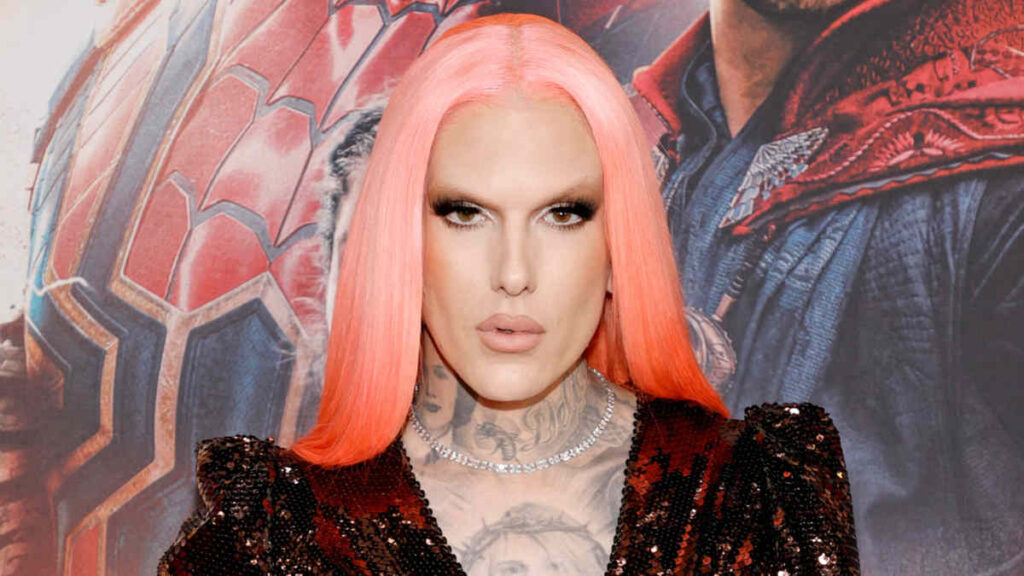
Building the Beauty Brand That Broke the Mold
When Jeffree Star launched his namesake cosmetics line in 2014, the beauty world didn’t see him coming — or maybe it didn’t take him seriously. A controversial internet personality with a Myspace past and a YouTube channel full of hot takes wasn’t exactly the profile of a future beauty mogul. But Jeffree wasn’t aiming to fit the mold. He was about to break it.
Armed with his savings, a small team, and the kind of online loyalty most brands would kill for, Jeffree debuted Jeffree Star Cosmetics with just three velour liquid lipsticks — bold, matte, unapologetically loud. The line sold out almost instantly. From there, he didn’t scale quietly. He exploded.
Each launch became a moment — a calculated collision of internet hype, drop culture, and controversy-as-currency. The Blood Sugar palette in 2018 didn’t just sell out; it redefined what an indie brand could achieve without traditional retail backing. It was packaged like a gothic first-aid kit, filled with punchy reds and neutrals, and promoted across every platform Jeffree touched. His videos didn’t just introduce products — they told stories, built anticipation, and fed a fanbase hungry for more.
Then came hits like the Alien and Cremated palettes, each toeing the line between artistic vision and shock value. The packaging was cinematic. The names were provocative. The marketing was maximalist. Jeffree understood something fundamental: in an era of endless beauty brands, attention isn’t given — it’s earned. And he earned it with every launch, often turning criticism into conversation, and conversation into cash.
Behind the glitter and gloss was a sharp business instinct. Jeffree rejected licensing deals and VC cash, choosing to own his brand outright. That meant more control, more risk — and much higher rewards. He mastered direct-to-consumer sales via Shopify, built a fulfillment infrastructure that could withstand viral sellouts, and retained a kind of creative tyranny over every aspect of the brand, from shade names to shipping.
While the industry leaned into clean beauty and corporate polish, Jeffree Star Cosmetics doubled down on attitude. His brand wasn’t for everyone — and that was exactly the point. In doing so, Jeffree didn’t just launch a successful makeup line. He rewrote the playbook for how an outsider could dominate a multi-billion-dollar industry, all without ever asking permission.
Also See: Top 50 Richest YouTubers in the World
Diversification Moves — Yaks, Real Estate, and Off-Grid Wealth
If Jeffree Star’s beauty empire was built on hyper-visibility, his next act is about controlled quiet — and surprisingly smart investments. In a move that initially felt more meme than mogul, Jeffree traded the flash of Los Angeles for the wide-open sprawl of Wyoming, where designer luggage meets livestock and the Wi-Fi is weak but the wealth strategy is strong.
At the heart of this pivot is Star Yak Ranch, a fully operational business raising and selling premium yak meat and wool. What started as a passion project quickly evolved into a legitimate revenue stream, fueled by the same branding savvy that made his lipsticks go viral. With custom packaging, high-margin cuts, and direct-to-consumer distribution, the ranch isn’t just quirky — it’s calculated. In niche agriculture markets, authenticity sells, and Jeffree leans into it hard.
But the yaks are just one piece. He’s quietly amassed a real estate portfolio that includes commercial buildings tied to his cosmetics logistics, several Wyoming properties with growing land value, and holdings in Michigan and California. This isn’t accidental. By investing in hard assets — land, livestock, and physical infrastructure — Jeffree has de-risked a portfolio previously anchored in the volatile world of digital fame and internet drama.
Then there’s the fleet: Rolls-Royces, Lamborghinis, and custom pink everything. They’re not just for flexing — some are stored, appraised, and treated like appreciating art. Like it or not, he understands how perception shapes value.
Jeffree’s off-grid chapter isn’t a retreat. It’s a reinvention — one where privacy becomes power and diversification becomes survival.
The Power (and Perils) of Fame: Scandals, Cancellations, and Comebacks
For Jeffree Star, fame has always been a double-edged contour brush — the same notoriety that fueled his rise often threatened to bring it crashing down. His career is littered with viral highs and cancel-worthy lows: past racist remarks resurfacing, messy influencer feuds (including the infamous Tati Westbrook–James Charles saga), and frequent accusations of manipulation behind the scenes of beauty YouTube.
But while other influencers crumbled under the weight of public backlash, Jeffree did something few could pull off — he monetized controversy. Each scandal seemed to trigger a surge in product sales, video views, or press coverage. Was it calculated? Not always. But Jeffree understood the modern media machine well enough to surf the waves instead of drown in them.
From a business perspective, the effects were mixed. Brand partnerships became scarce, and YouTube’s algorithm no longer favored him like it once did. Yet Jeffree Star Cosmetics remained privately owned, immune to shareholder panic or public funding fallout. That insulation proved crucial. Even when his name trended for all the wrong reasons, he controlled the narrative where it mattered most — on his own platforms.
His unofficial PR strategy? Go quiet, recalibrate, then re-emerge with something big: a new product, a new look, or a new chapter (like the Wyoming relocation). It’s not traditional reputation rehab, but in Jeffree’s world, staying interesting is often more valuable than staying likable.
In the end, it’s that paradox — chaos paired with control — that may be his most enduring legacy.
How Jeffree Compares to Other Beauty Titans
In the crowded arena of beauty moguls turned millionaires (and billionaires), Jeffree Star’s name still draws attention — not just for the drama, but for the distinct path he’s carved. As of 2025, his estimated $200 million net worth puts him firmly in the upper tier of beauty entrepreneurs, but what makes his ascent unique isn’t the dollar amount — it’s how he got there.
Take Kylie Jenner, for example. She hit billionaire status (briefly, controversially) through a brand that leaned heavily on licensing deals and high-profile distribution partnerships, before selling 51% of Kylie Cosmetics to Coty Inc. in 2019. It was a fast rise, fueled by reality TV fame and traditional PR machines — but also a relinquishment of long-term control.
Huda Kattan, founder of Huda Beauty, followed a hybrid route: leveraging influencer status, but also building a corporate infrastructure and accepting investor capital to scale. Her net worth hovers around the $560 million mark, supported by international expansion and retail placements.
By contrast, Jeffree’s model is fiercely independent. He never gave up equity in Jeffree Star Cosmetics. He bypassed department store deals in favor of direct-to-consumer dominance. Every dollar earned came without dilution, and every risk was his alone. That full ownership may have capped his public valuation, but it also gave him freedom — especially when navigating controversies that might have sunk a publicly traded brand.
He also remained intensely niche, appealing to a ride-or-die audience that didn’t flinch during backlash. While others pursued global mass appeal, Jeffree doubled down on exclusivity and brand persona.
In short: he scaled differently, moved with more autonomy, and survived on loyalty — not legacy media or conglomerate support. And in today’s evolving creator economy, that playbook might just prove more durable than the flashy billion-dollar deals.

“What the Cameras Don’t Show”: A Narrative Peek Behind the Persona
Out here, the silence is the most expensive thing I own.
That’s how Jeffree Star might put it if he weren’t too busy feeding his yaks before sunrise or renovating yet another outbuilding on his sprawling Wyoming estate. For someone whose fortune was built on being seen — in bold palettes, in viral thumbnails, in the eye of every storm — the decision to step back from LA and into the vast, snow-dusted stillness of the countryside feels less like an escape and more like a recalibration.
“The drama never stops in LA — even when you’re done with it,” he once said in an interview. And it shows. These days, Jeffree posts less, speaks more selectively, and surrounds himself with animals more than influencers. There are no paparazzi on dirt roads, no glam squads in the barn.
But that doesn’t mean the ambition’s gone. The ranch, like the rest of his empire, is curated — just in a new key. Where once there were pink vault rooms and Swarovski-covered closets, now there are designer saddles and heritage livestock. Different stage, same vision.
Fame, as Jeffree has learned, comes with a cost — not just financially, but emotionally. The betrayals, the callouts, the constant reinvention. But here, under a sky so wide it seems to swallow the past, there’s room to rebuild not just wealth, but peace. And for someone who once went viral for yelling into a camera, the quiet might just be the loudest statement of all.
What’s Next? Predictions for Jeffree Star’s Financial Future
Jeffree Star has always thrived in reinvention, so it’s unlikely his story ends with YouTube nostalgia or a quiet ranch life. If anything, 2025 feels like a midpoint — the calm before another lucrative pivot.
One possibility? A lifestyle brand rooted in rural luxury. With his growing fanbase of “off-grid glam” enthusiasts, Jeffree is uniquely positioned to turn his Wyoming persona into a brand — think high-end ranchwear, home goods, or wellness products that blend his aesthetic with his newfound simplicity. A curated, DTC lifestyle line would align with market trends favoring authenticity and niche identity.
There’s also persistent speculation around Jeffree Star Cosmetics going mainstream again — or even going public. While an IPO might clash with his preference for total control, the value he’s built is undeniable. A strategic acquisition or equity partner could unlock massive liquidity without compromising his involvement, especially if the beauty industry continues its M&A streak.
And don’t count out agriculture expansion. With luxury meat markets growing and “ethical exotics” gaining traction, Jeffree’s Star Yak Ranch could evolve into a full-scale agribusiness — one that capitalizes on traceability, sustainability, and celebrity intrigue.
Whatever comes next, it likely won’t be predictable — but it will be calculated. If there’s one thing Jeffree Star has proven, it’s that he plays the long game, and he plays it his way.
Love Him or Hate Him — Jeffree Star Isn’t Done Yet
Jeffree Star’s story isn’t tidy — it’s electric, divisive, and unmistakably modern. He’s a case study in contradictions: a beauty mogul who left the glam capital for livestock, a provocateur who mastered self-reinvention, a canceled creator who turned backlash into brand equity. Through controversy and control, spectacle and strategy, he’s managed to do what few in the influencer economy can: outlast the algorithm.
In a landscape obsessed with relatability, Jeffree has never pretended to be accessible. He’s been unapologetically curated, ruthlessly branded, and often controversial — and somehow, all of that has made him even more enduring. His empire wasn’t built on mass appeal, but on intensity of loyalty. That’s what sets him apart.
Whether his next act involves IPOs or more livestock, one thing’s clear: Jeffree Star understands the creator economy better than most. Not because he plays by its rules, but because he’s always been two moves ahead — building his board, writing his playbook.
In an age when attention is fleeting, staying unpredictable might just be his most valuable asset of all.
Nishant is a digital strategist and celebrity finance analyst with over 15 years of experience in SEO-driven content. As Founder of TheNetWorths.com, he creates high-authority profiles on wealth, branding, and cultural influence.












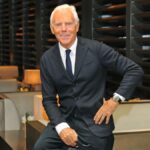
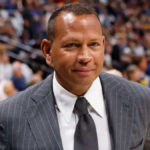

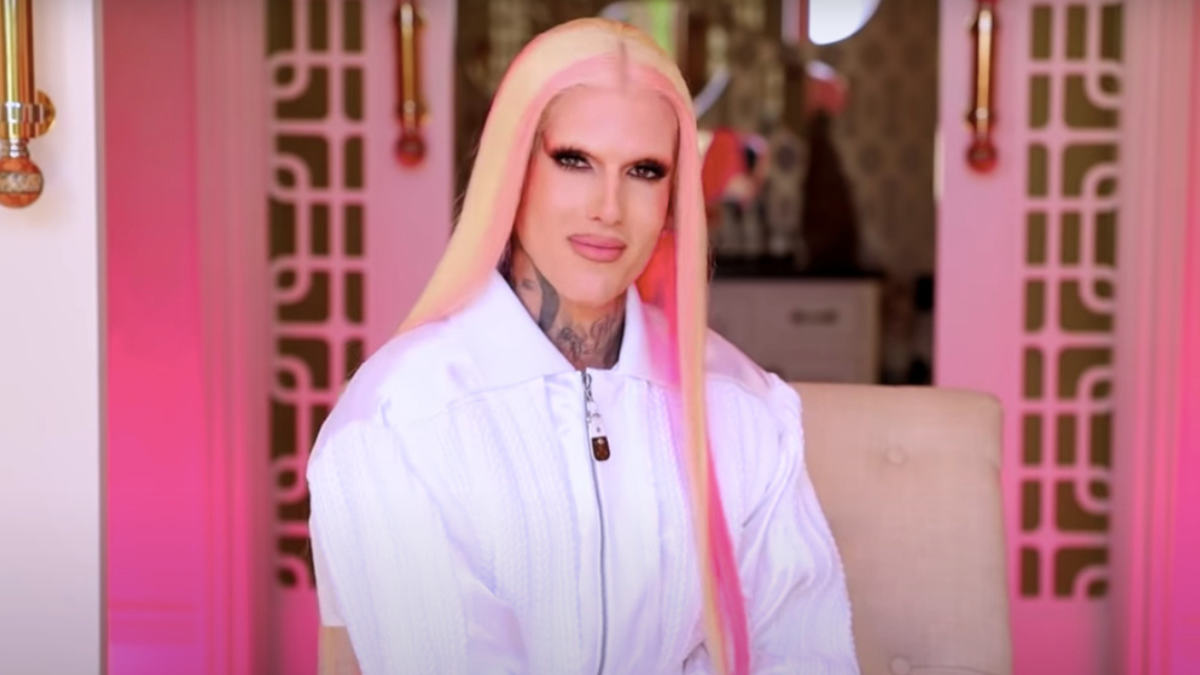
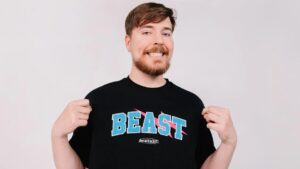
2 thoughts on “Jeffree Star Net Worth 2025: How He Built a $200 Million Empire from Makeup and Merch”